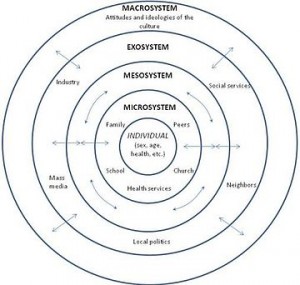I am so interested in Universal Design for Learning or UDL. In an article by McGuire, Scott & Shaw (2006) they discuss Universal Design and its origins in architecture by architect Ronald Mace. The idea behind this design is to make environments accessible to all peoples regardless of age or ability. McGuire, Scott & Shaw believe that in the era of the reauthorization of the Individuals with Disabilities in Education Act (IDEA) and No Child Left Behind (NCLB) there needs to be more thought in planning in how we design our educational practices with this idea of accessibility for all. Presently (in New York State) we are facing the consequences of our adoption of the Common Core Learning Standards (CCLS) and Annual Professional Performance Review (APPR) in our Race To The Top (RTTT) efforts to reform and fund education with the federal government. What we need to understand is how this is impacting the education of ALL students. McGuire, Scott & Shaw at what elements of Universal Design can inform a new paradigm in teaching in learning to benefit students of all abilities. Nine elements of accessibility to a curriculum are identified (McGuire, Scott & Shaw, 2006) as: equitable use, flexibility in use, simple and intuitive, perceptible information, tolerance for errors, low physical effort, size and space for approach and use, a community of learners and instructional use. Curriculum accessibility is crucial for success of all students on assessments that rate the effectiveness of teachers and guide instructional supports (Academic Intervention Services) and educational programs (charter schools) for all students. Universal Design of Learning is still developing into a well researched theory or framework. This leads to the question of what theoretical/conceptual framework can inform an understanding and anchoring of UDL?
Digging deeper into UDL, the work of Culturally Responsive Teaching (CRT) is a conceptual theory that shares many commonalities of teaching and learning with UDL. These commonalities are: high expectations for all students, equitable use, flexible use and a learner centered approach to instruction and learning. CRT has its origins in the work of Geneva Gay. Culturally Responsive Teaching is essentially knowing your students and teaching to them, not at them. It is bringing the diversity of the classroom to help all students achieve their potential through the acknowledgement and integration of experiences, abilities and the whole child for the betterment of the entire classroom. While Culturally Responsive Teaching looks at ethnic backgrounds, it also applies to understanding a students ability or disability.
This is the connection to the understanding of Universal Design of Instruction. It is meant to benefit the needs of all students by addressing the nine elements mentioned above to meet the diversity of our population of students and increase our tolerance and acceptance of this diversity.
So now to the big question: How does our adoption of Common Core State Standards and Annual Professional Performance Review impact our ability to provide instructional practices that embrace the pedagogy of Culturally Responsive Teaching? Does it impact our ability at all?

